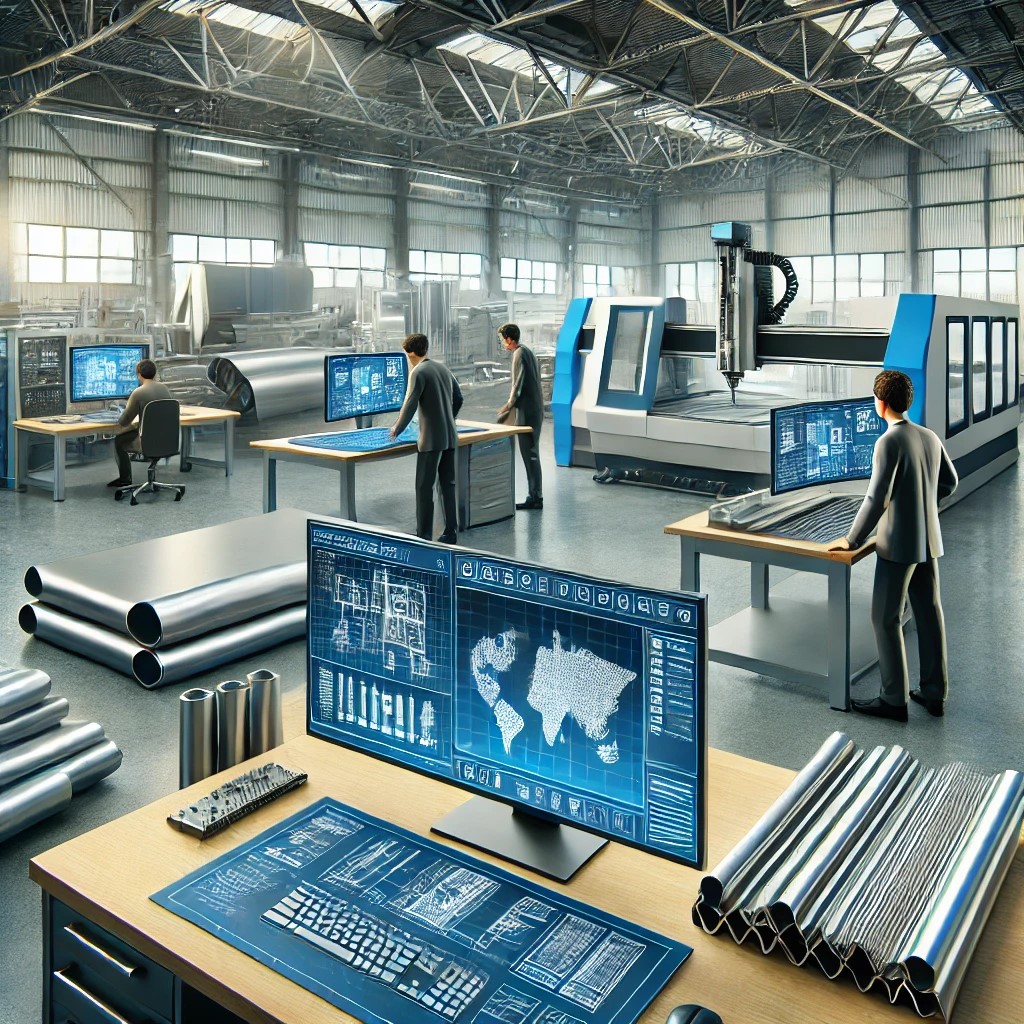The process of employing sheet metal fabrication techniques to create test models or preliminary versions of metal components effectively is known as sheet metal prototyping. This allows manufacturers to spot possible problems, and improve specifications before beginning full-scale production, producers can validate designs. The process involves cutting, bending, and assembling metal sheets to create three-dimensional parts, making it an essential step for industries ranging from automotive to consumer electronics. Further in this blog, we will explore some cost-effective strategies for sheet metal prototyping projects.
In the world of sheet metal prototyping, using the right CAD software is critical for efficient design and accurate modeling. Autodesk’s Fusion 360, for example, offers powerful tools for metalworking and prototyping.

Strategic Material Selection and Optimization
A key component of cost control is selecting the appropriate material grade and thickness. Even while high-end materials may appear fascinating, starting with standard grades like mild steel or aluminum can save a lot of money. For early prototypes, think about utilizing remnant materials from previous projects, and maximize material consumption by effectively nesting pieces throughout the cutting process. This method can reduce waste by up to 30% without sacrificing prototype quality.
For early prototypes, it's often more cost-effective to use basic materials like mild steel instead of high-end alloys. The Fabricators & Manufacturers Association (FMA) provides guidelines on material selection that can help optimize your costs.
Leveraging Digital Design Tools and Simulation
Spend time on thorough digital design and simulation before cutting any metal. Virtual testing of designs is made possible by modern CAD software, helping in the early detection of possible production problems. This pre-production study can cut down on the number of physical prototypes required and avoid expensive errors. Much like Injection Moulding in China has transformed the optimization of plastic prototypes, tools such as CAD plugins tailored to sheet metal may automatically calculate bend allowances and suggest design enhancements.
Simplified Design Approaches
Reduce the number of intricate features and bends in your early prototypes. Think about designs that accomplish the same functionality with fewer procedures because every bend increases production time and expense. Use standard bend radii whenever possible, and unless it is absolutely necessary for testing, stay away from pointless secondary processes like welding or finishing.
Batch Planning and Process Consolidation
Consider making small batches rather than individual prototypes. This method can save costs per unit and make greater use of setup time. Combine related activities from several prototypes; for instance, execute all cutting operations together, followed by all bending operations.
Strategic Outsourcing and Partnership
Build connections with adaptable fabrication businesses that provide a variety of services under one roof. This method lowers coordination overhead and does away with the need for transportation between various vendors. Seek partners who are prepared to offer design input and, using their manufacturing experience, recommend less expensive options. For jobs with a short turnaround time, think about using local shops; for larger quantities, save production offshore.
Final Thoughts
In product development, sheet metal prototyping is still a crucial stage where project success is determined by striking a balance between cost and quality. By employing these tactics, manufacturers can drastically cut costs without sacrificing quality. Keep in mind that effective prototyping involves more than just making a tangible product; it also entails obtaining relevant knowledge that will guide and enhance the eventual production process.
FAQs
How much must be ordered in advance for sheet metal prototypes?
The majority of fabricators take orders for prototypes in single units, however, ordering three to five pieces frequently offers better value and allows testing variations.
What is the average time required for sheet metal prototyping?
While large designs with numerous procedures may take two to three weeks to produce, simple prototypes can be finished in three to five business days.
Can I make changes to my prototype design while it's being produced?
Prototyping allows for minor modifications, but major changes necessitate new setup and tooling, which raises costs and delays.
Which metal is the most economical to use for prototyping?
The most cost-effective steel is usually mild steel, which has good machinability and weldability along with reasonable strength and durability.
If you're interested in learning more about industry standards and practices, check out resources from the Society of Manufacturing Engineers (SME).
Learn more about our custom metal fabrication services.
Ready to optimize your next sheet metal prototyping project? Contact Uidea for expert advice and cost-saving solutions.
















